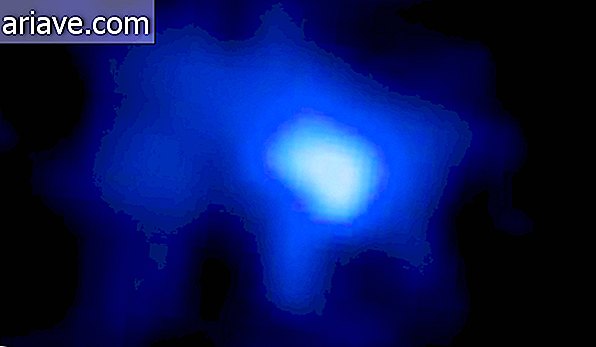A huge area of Saturn has changed color and no one really knows why.
In addition to the iconic rings, another striking feature of Saturn, as explained in an article here from the Curious Mega - which you can access via this link - is a huge hexagon located over the north pole of the planet. Discovered in the mid-1980s, this interesting formation measures an incredible 30, 000 kilometers in diameter and extends 100 kilometers from the atmosphere to the planet's surface.
According to NASA, what keeps the hexagon in this shape is still a mystery to scientists. But it is known that there is an air stream that runs along its limits with speeds of over 320 kilometers per hour and that each end of the hexagon seems to rotate about its center at about the same rate as Saturn rotates about its own axis. .

In addition, according to Bec Crew of Science Alert, based on size and movement, scientists have concluded that the hexagon is a gigantic hazy pattern generated by a huge perpetual hurricane that has been for decades - or even centuries - active at the north pole of the planet.
Color change
Well, dear reader, this huge - mysterious and overactive - area of Saturn has simply changed color, but no one can say for sure why. According to NASA, in November 2012, the Cassini spacecraft captured images of the famous hexagon, and in the records it looked like this:

But the equipment returned to capture images of the hexagon in September this year and this time, the records showed something different. Check out:

Did you notice the difference in shades? Very significant, don't you think? So see again!

Perhaps the hexagon is functioning as a kind of barrier, preventing mist particles produced outside this formation from entering it. This theory was proposed after NASA researchers analyzed the hexagon and realized that there were differences in the types of particulate matter both outside and inside.
Atmospheric phenomenon
According to NASA, the best explanation they could find for color change is that it may be related to the Saturnian seasons. By the way, since each year on Saturn corresponds to 29 years on Earth, the change of seasons occurs much less often than here. More precisely, once every seven (terrestrial) years or so.

As the space agency explained, in May 2017, the Saturnian North Pole will be the scene of the summer solstice, and scientists suspect that the color variation from blue to gold is an effect of the increase in the production of photochemical mists in the atmosphere in this region. of the planet.
According to NASA, between November 1995 and August 2009, when the pole remained without sunlight - and the polar winter - its atmosphere was free of particles produced by photochemical reactions, and the hexagon became bluish.
However, after the 2009 equinox, that same region was constantly receiving the sun's rays, resulting in the production of aerosols (very fine particles) inside the hexagon and around the north pole, making the atmosphere look foggy and golden - because of the larger number of particulate matter.











